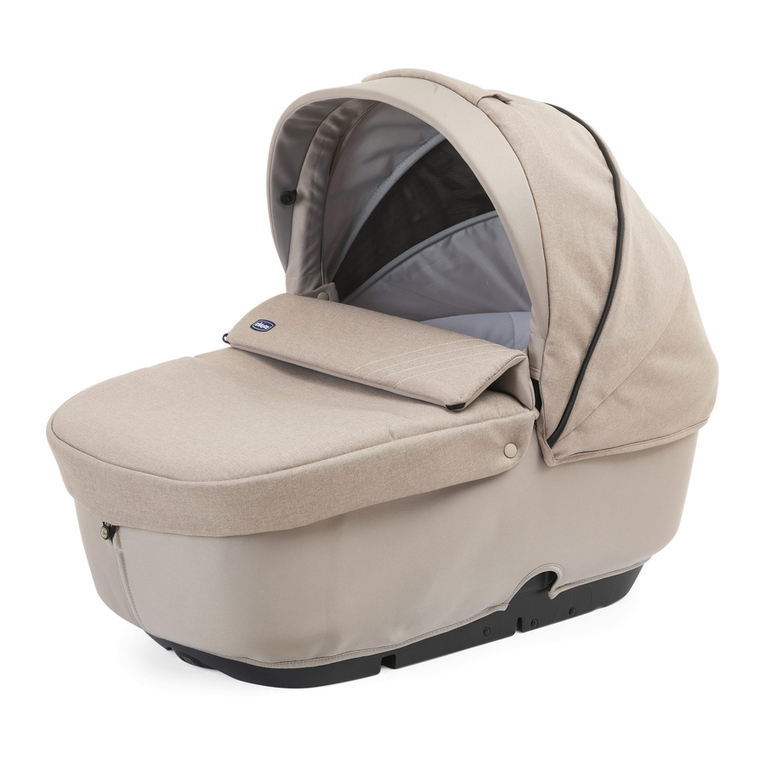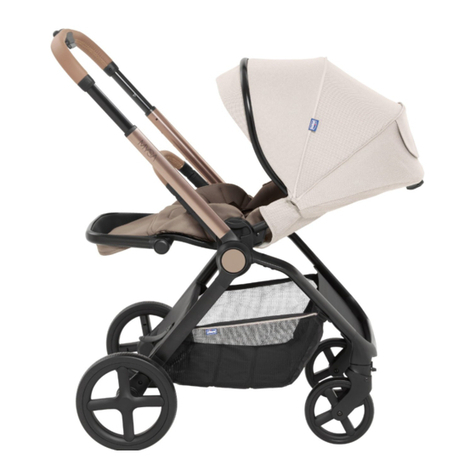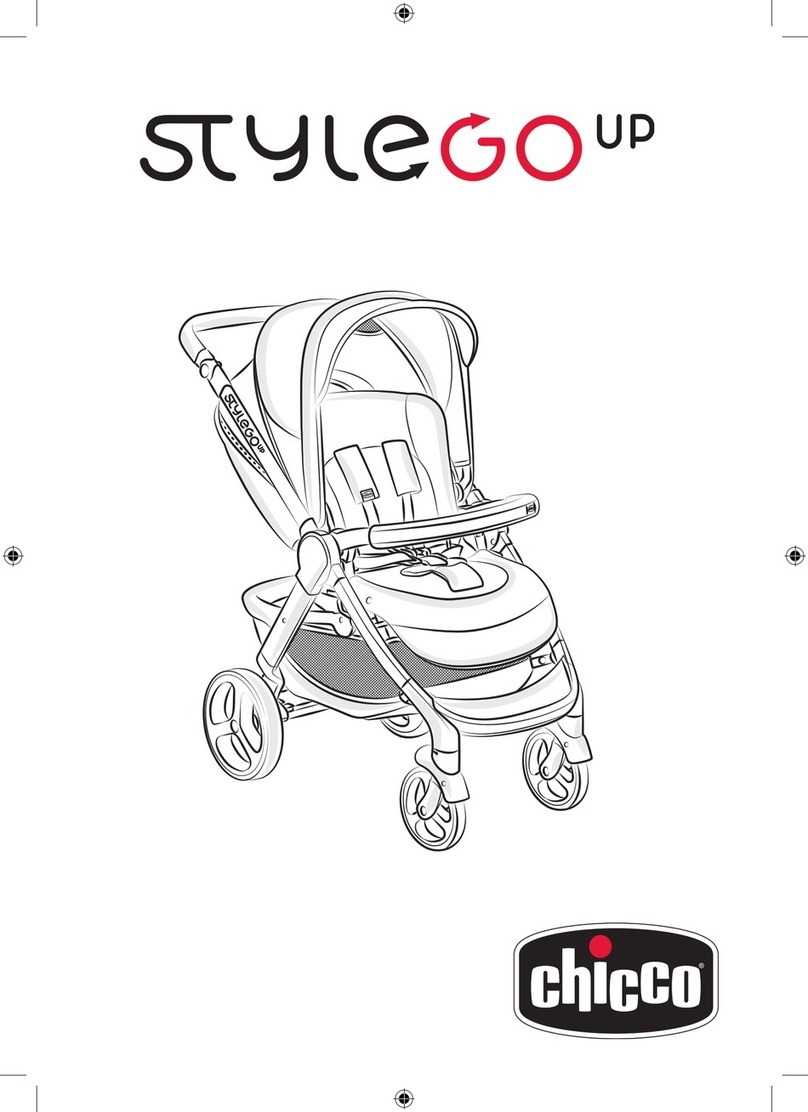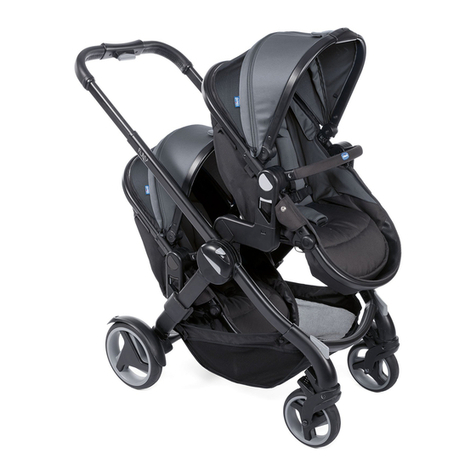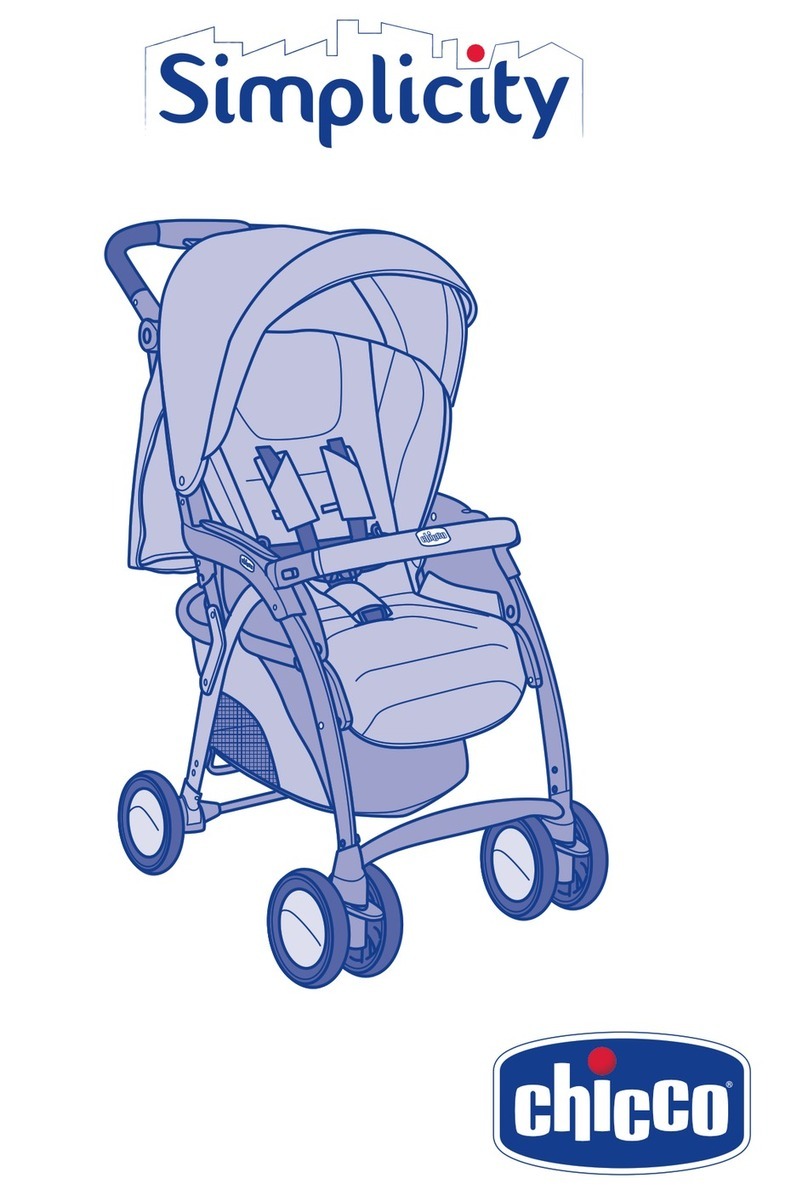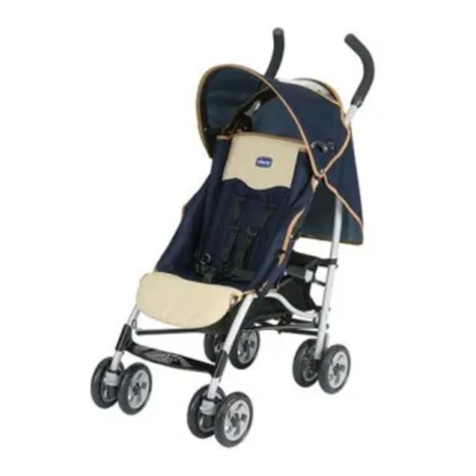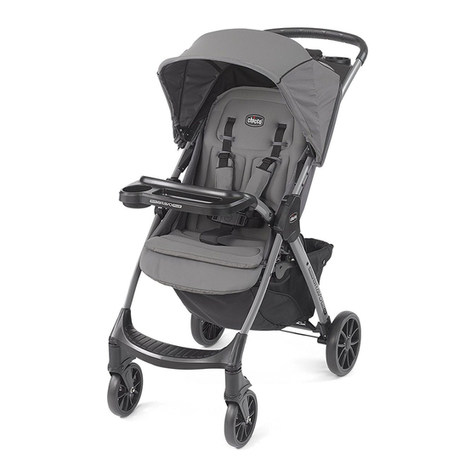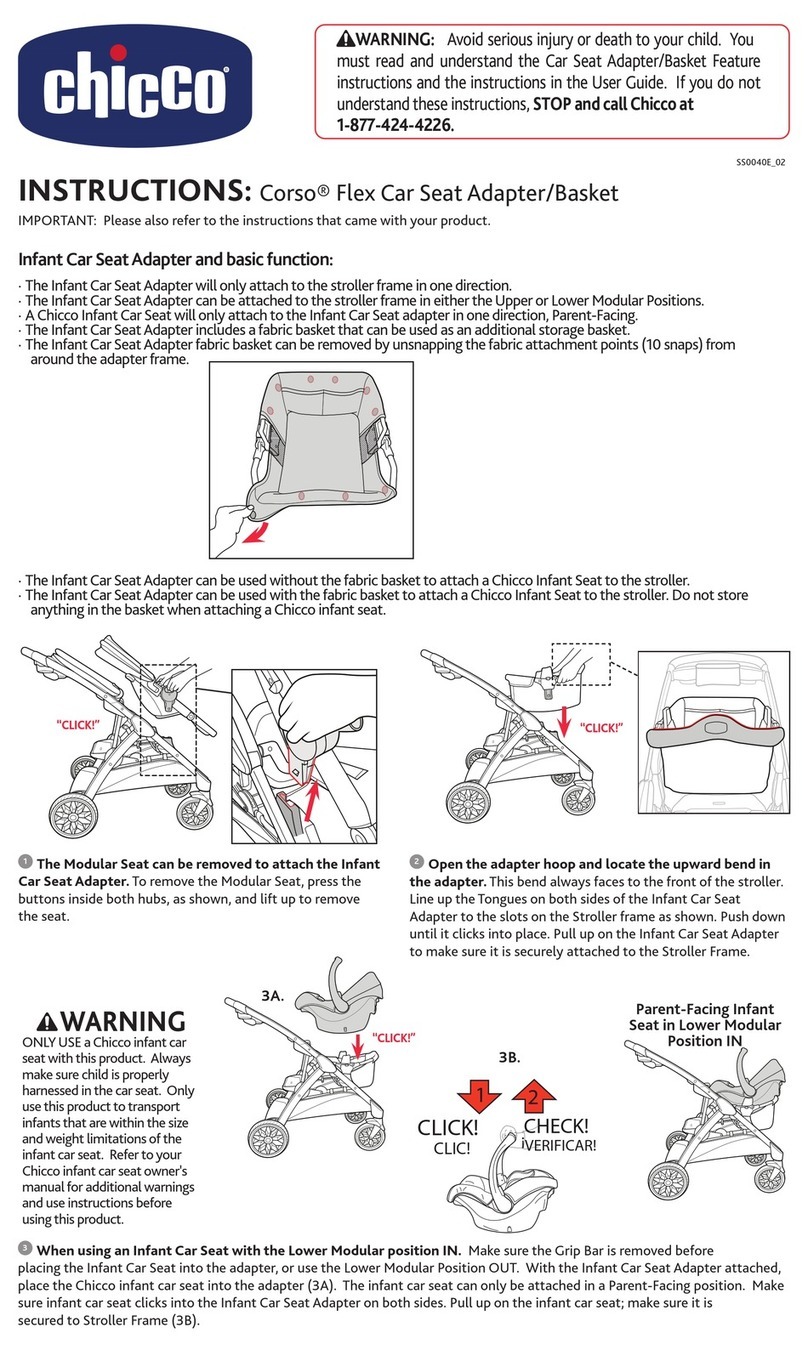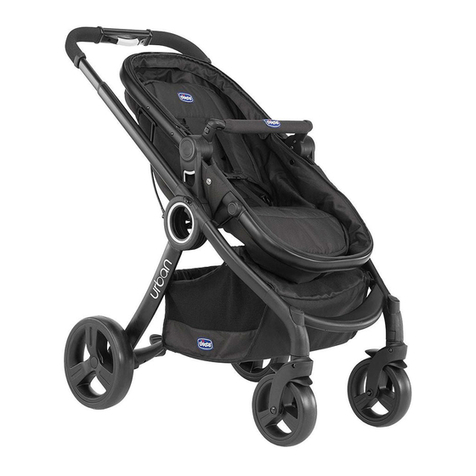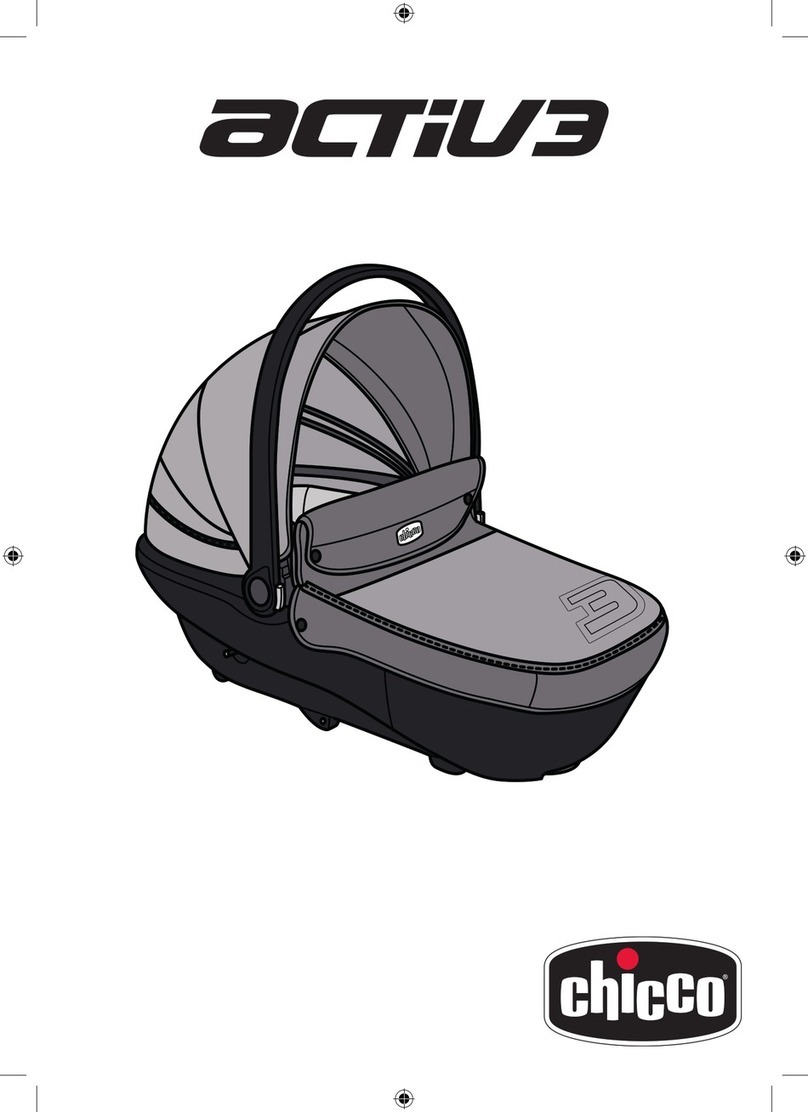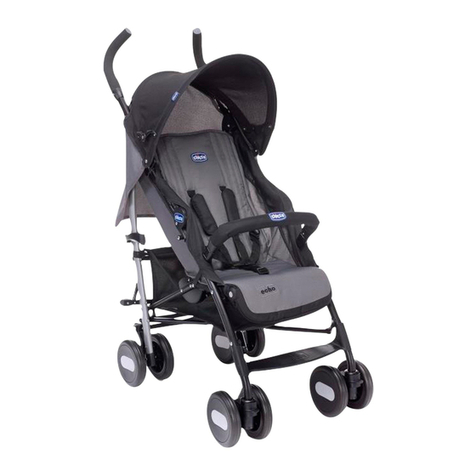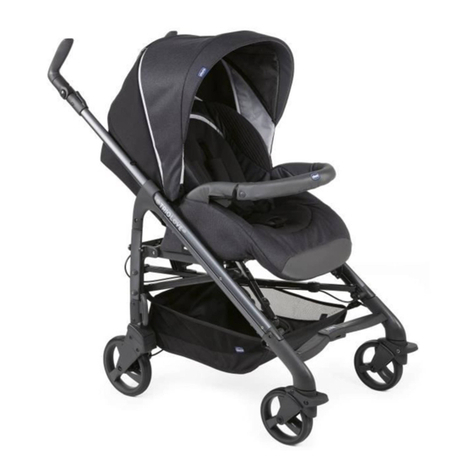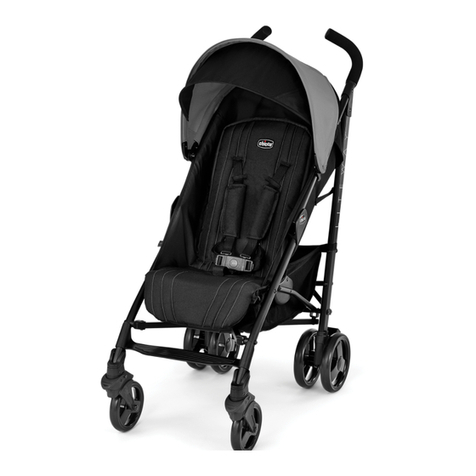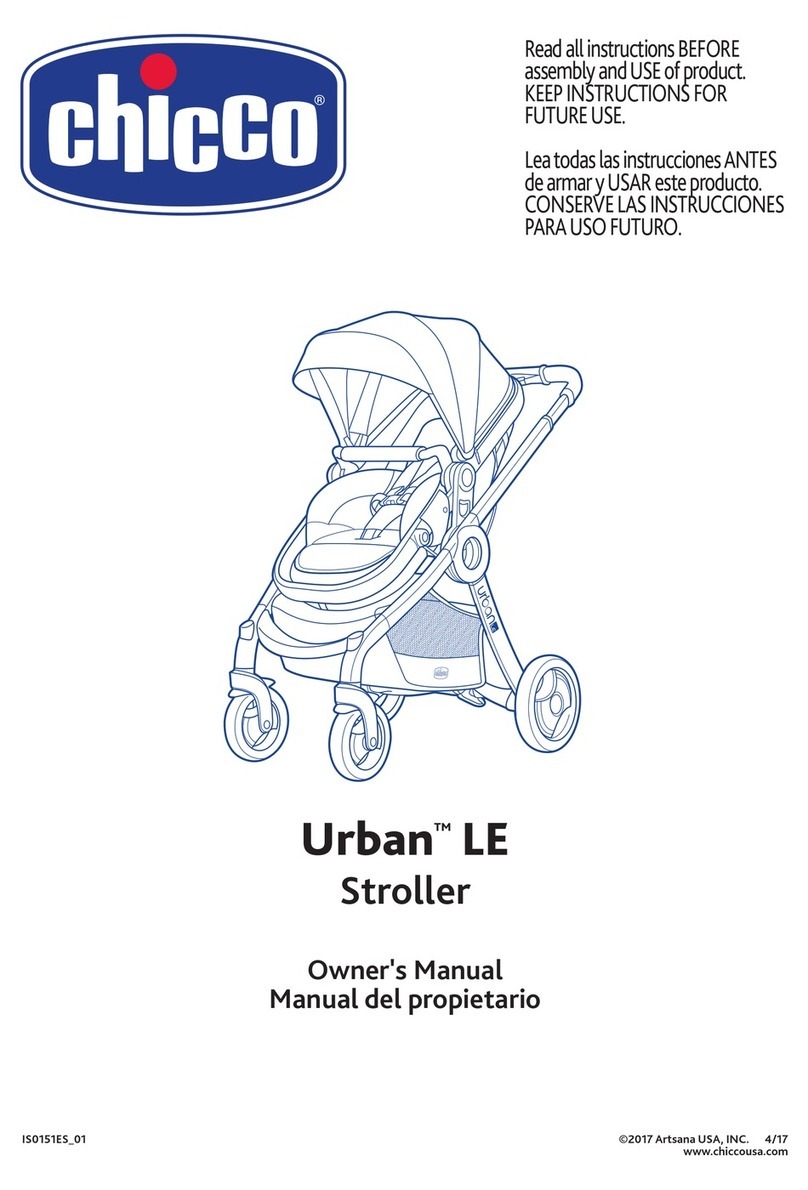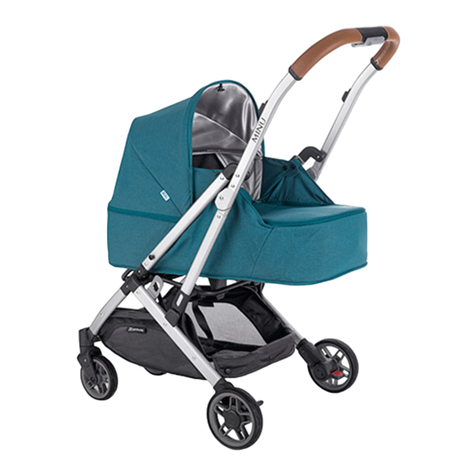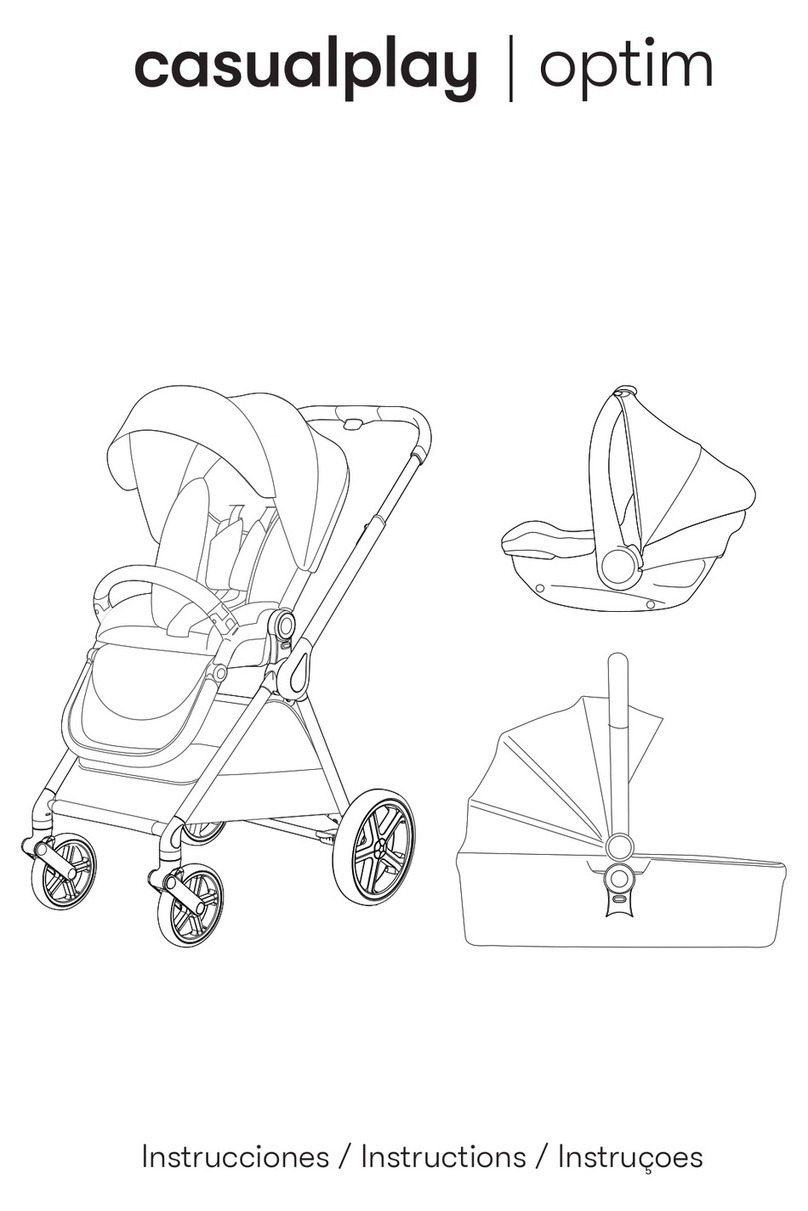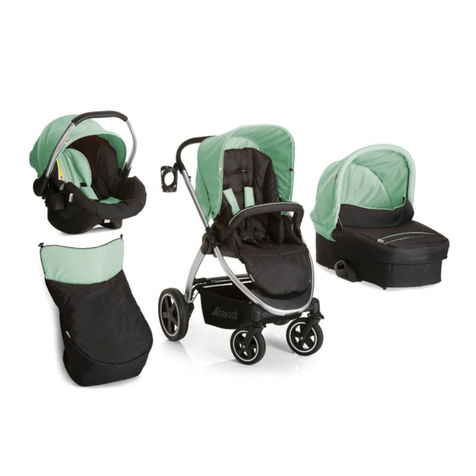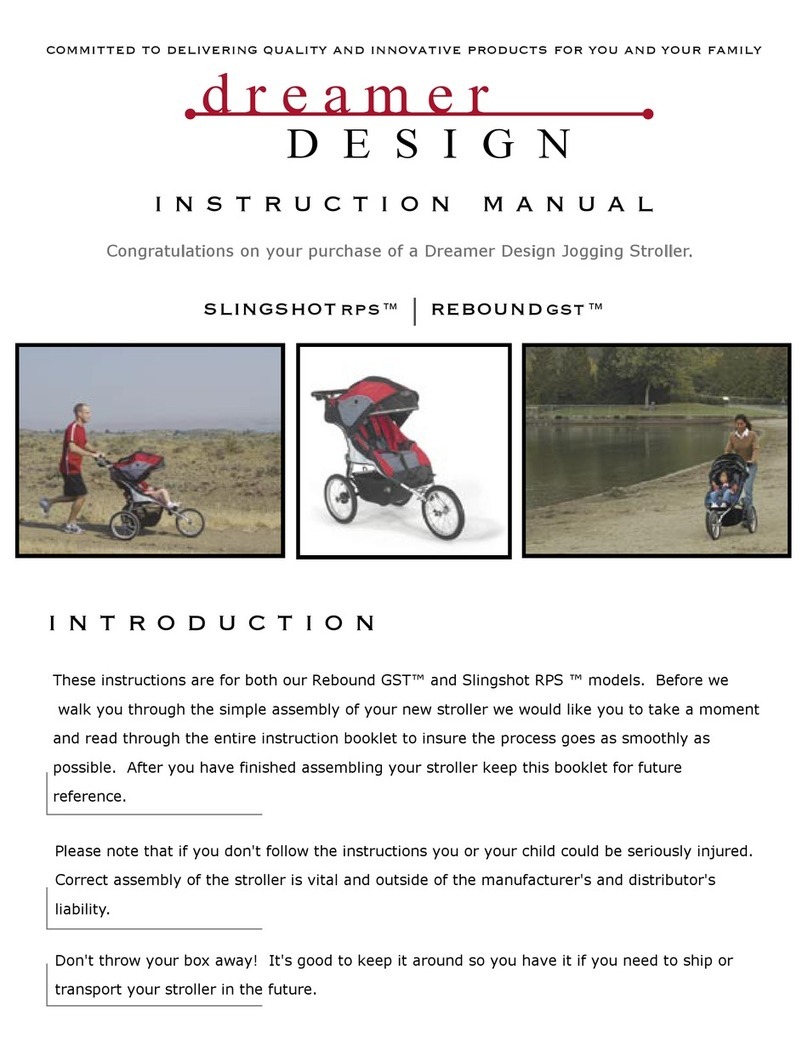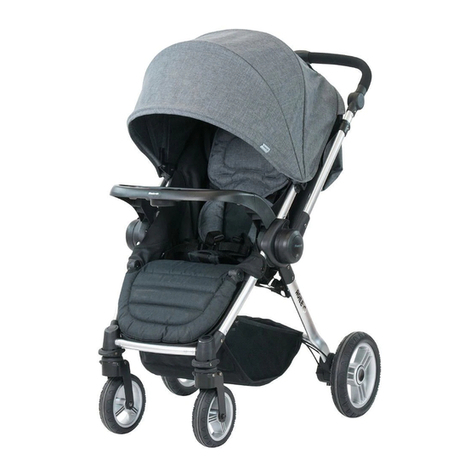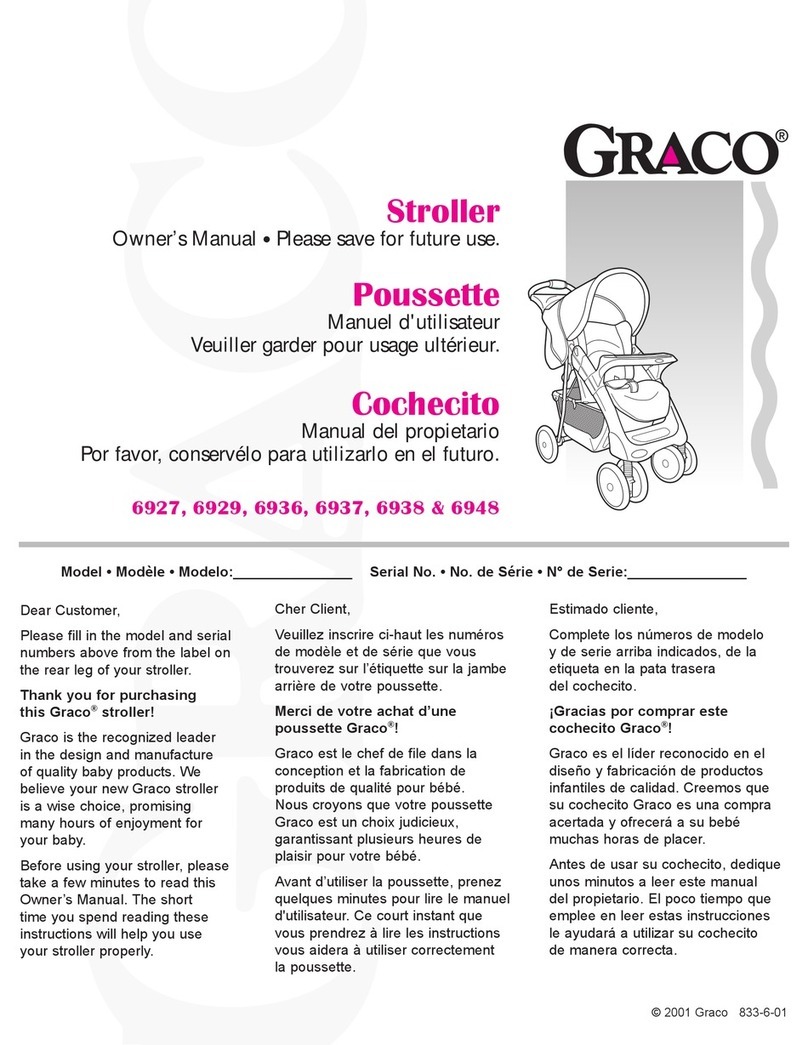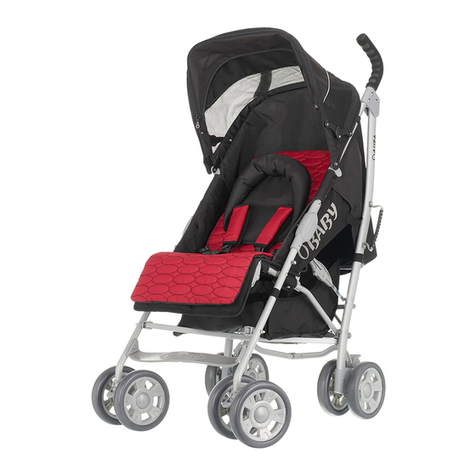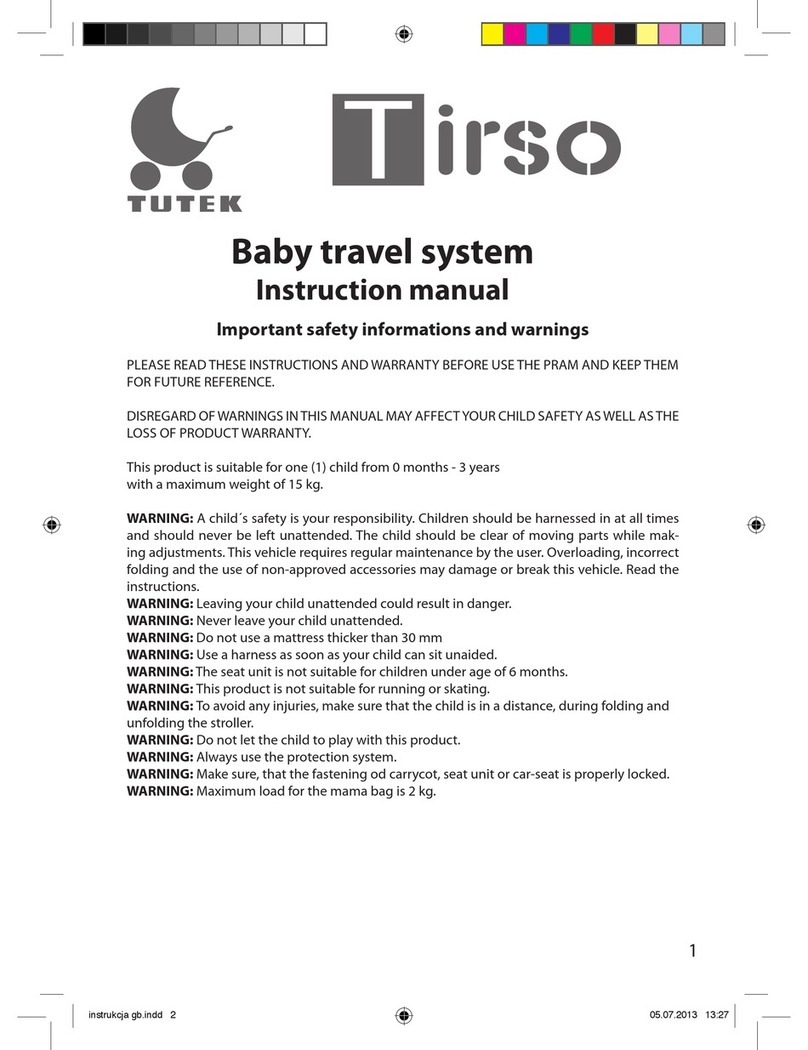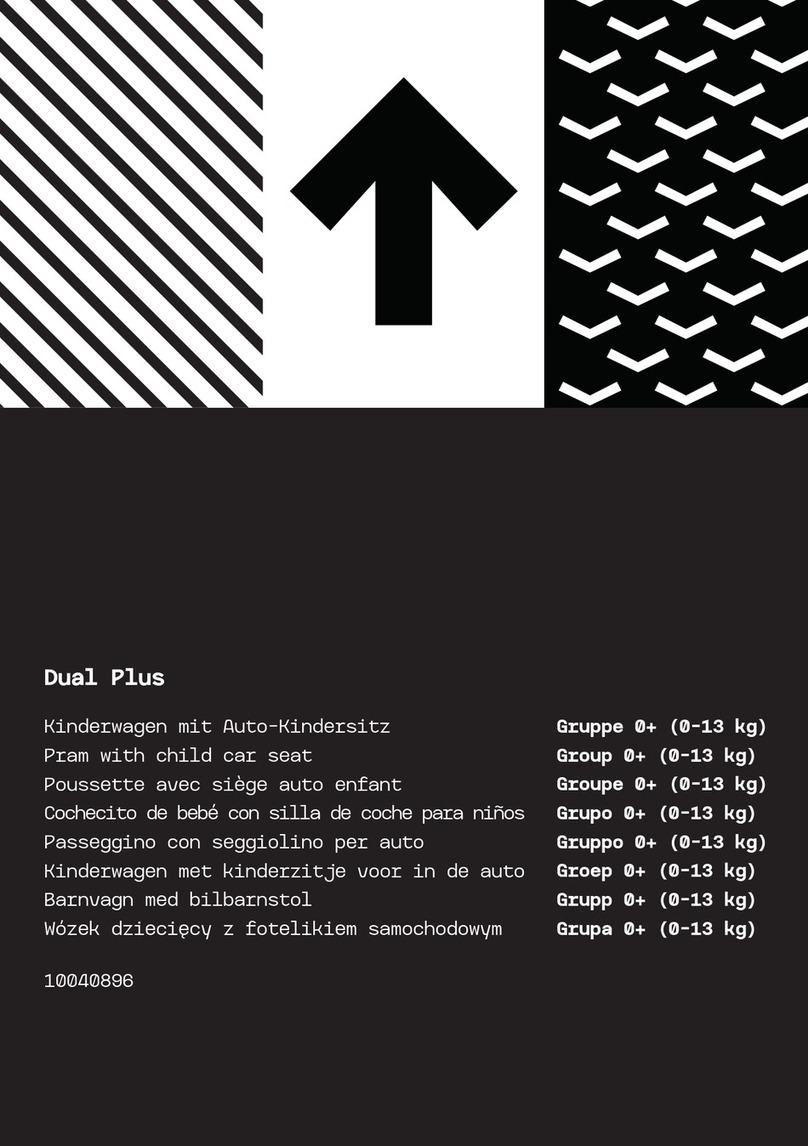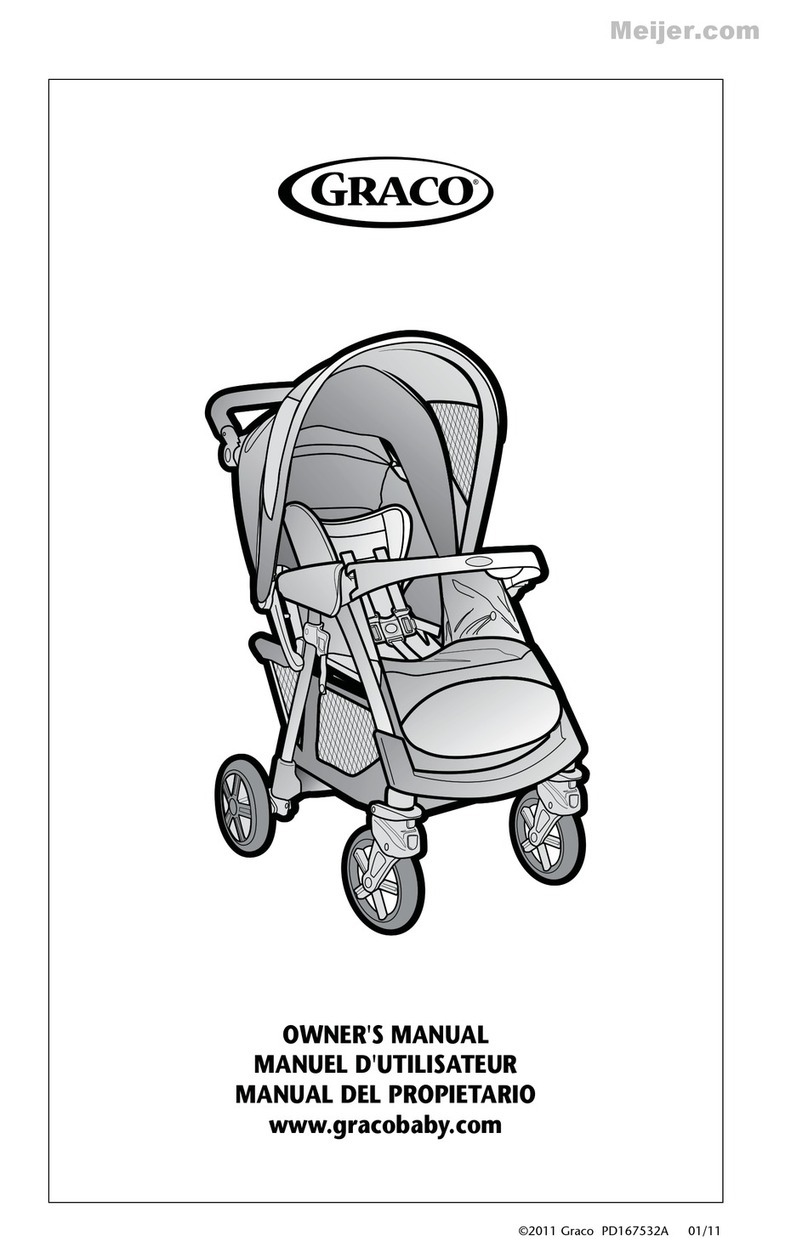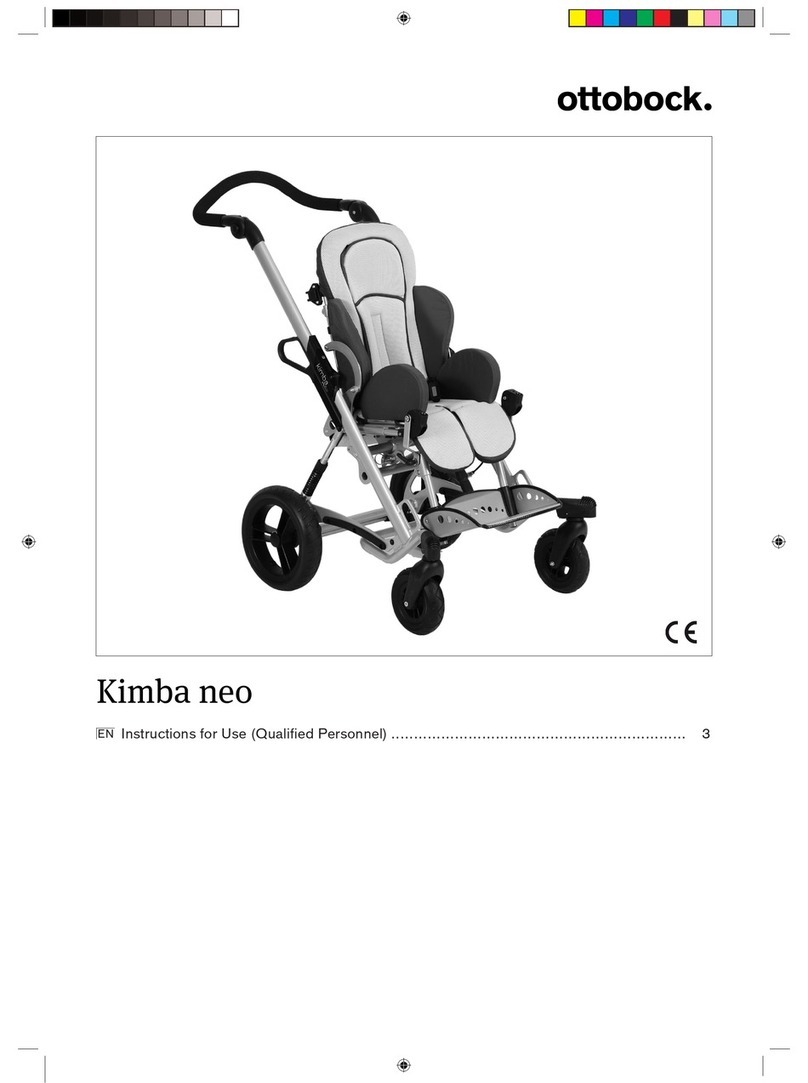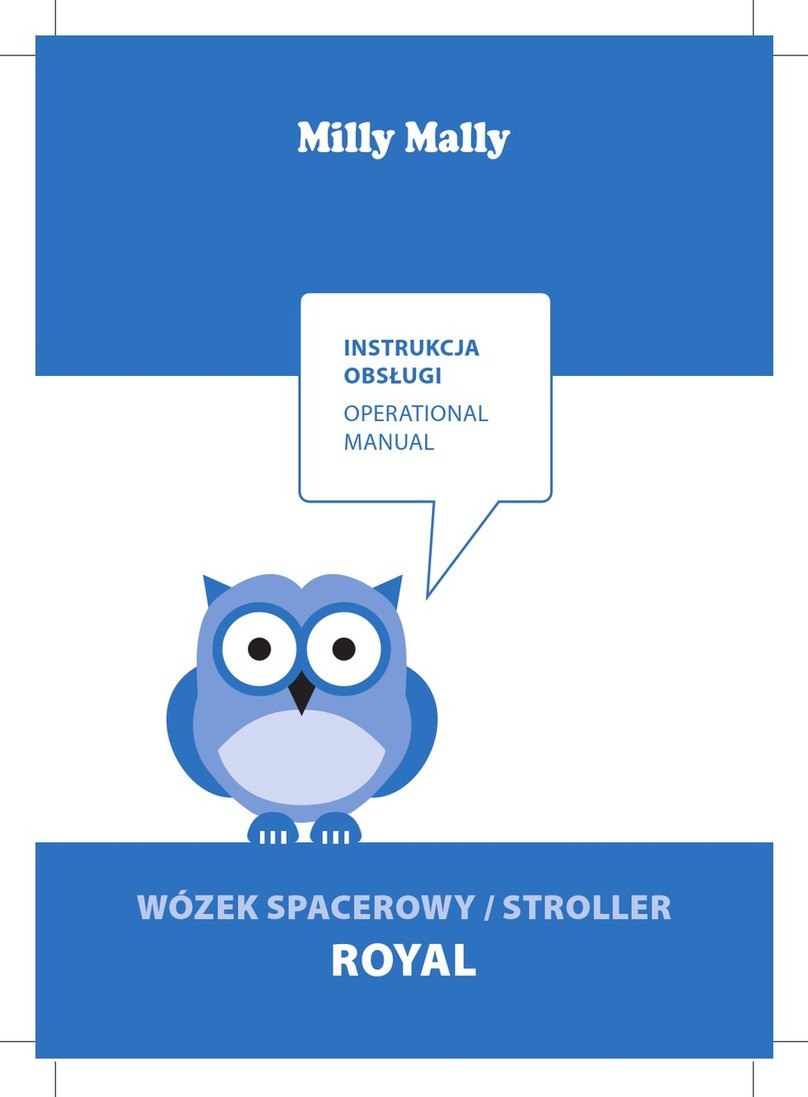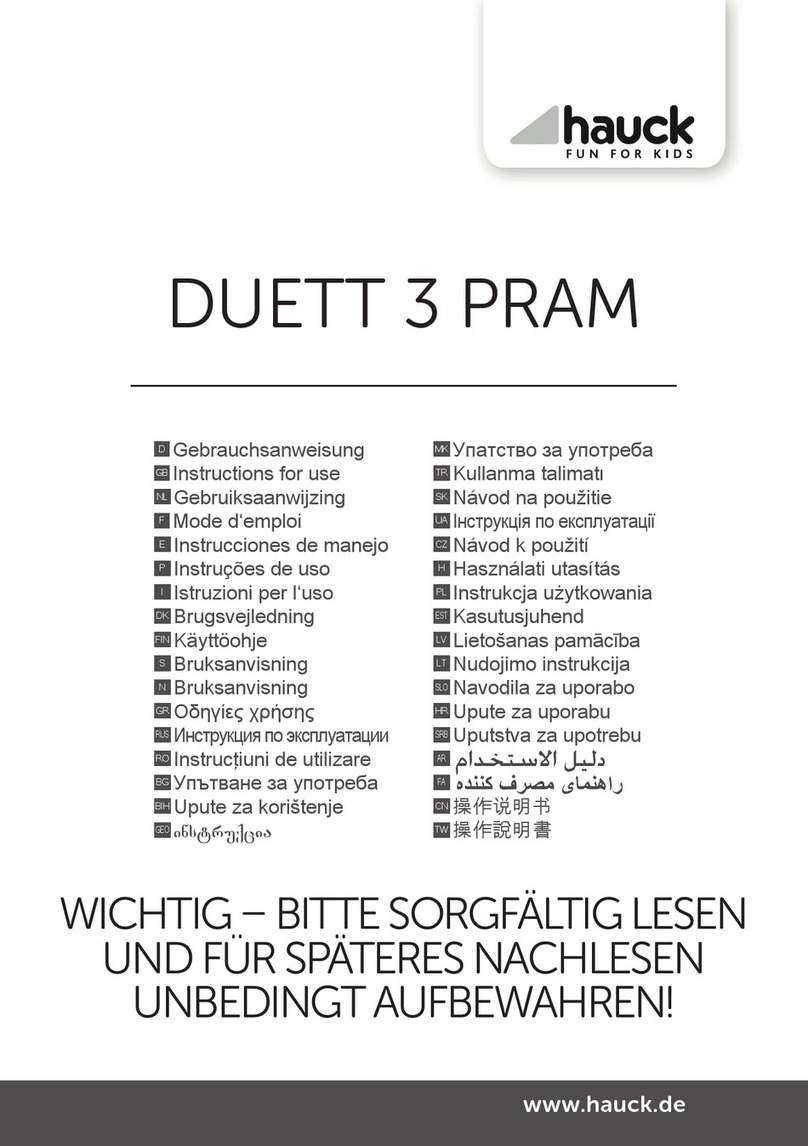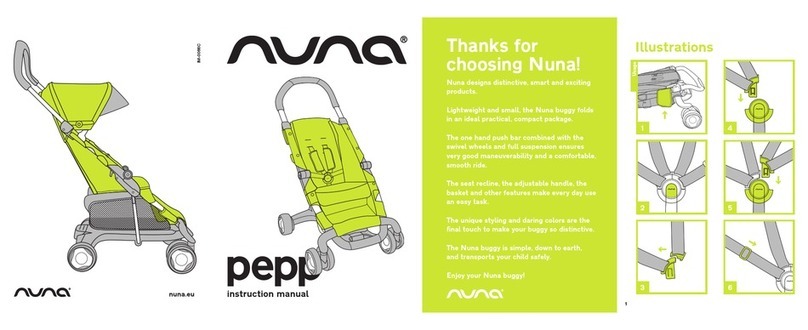
10
vicino al bambino oggetti muniti di
corde.
• Non usare il passeggino sulle scale o
sulle scale mobili: si potrebbe perdere
improvvisamente il controllo.
• Prestare attenzione quando si sale e
scende un gradino o il marciapiede.
• Se lasciate il passeggino esposto al
sole per molto tempo, aspettate che
si raffreddi prima di mettervi il bam-
bino. L’esposizione prolungata al sole
può causare cambiamenti di colore
nei materiali e tessuti.
• Evitare il contatto del passeggino con
acqua salina per prevenire la forma-
zione di ruggine.
• Non utilizzare il passeggino in spiaggia.
• Quando non in uso, il passeggino
va tenuto lontano dalla portata dei
bambini.
LISTA DEI COMPONENTI
• Telaio passeggino
• 2 ruote anteriori
• 2 ruote posteriori
• Asse posteriore
• Kit installazione ruote posteriori (2 rondelle, 2 mollette, 2 tappi)
• Manicotto paracolpi/vassoio bambino
• Capotte
• Kit comfort (spallacci e spartigambe imbottiti)
• Tasca portaoggetti
• Mantellina parapioggia
CONSIGLI PER LA PULIZIA E LA MANUTENZIONE
ATTENZIONE: Questo prodotto necessita di regolare manu-
tenzione periodica. Le operazioni di pulizia e manutenzione
devono essere effettuate solo da un adulto.
PULIZIA
Pulire le parti in tessuto mediante una spugna umida e del
sapone neutro. Il passeggino è sfoderabile (fare riferimento
al capitolo “Vestizione/svestizione seduta”). Per la pulizia delle
parti tessili riferirsi alle etichette di lavaggio. Di seguito sono
riportati i simboli di lavaggio ed i relativi significati:
Lavare a mano in acqua fredda
Non candeggiare
Non asciugare meccanicamente
Non stirare
Non lavare a secco
Pulire le parti in plastica periodicamente con un panno umido,
non utilizzare solventi o prodotti abrasivi. Asciugare le parti
in metallo, dopo un eventuale contatto con acqua, al fine di
evitare il formarsi di ruggine.
MANUTENZIONE
Lubrificare le parti mobili, in caso di necessità, con olio secco
al silicone. Controllare periodicamente lo stato di usura delle
ruote e tenerle pulite da polvere e sabbia. Assicurarsi che tutte
le parti in plastica che scorrono sui tubi in metallo siano pulite
da polvere, sporco e sabbia, al fine di evitare attriti che possano
compromettere il corretto funzionamento del passeggino.
Tenere il passeggino in un posto asciutto.
APERTURA E PRIMO MONTAGGIO
1. Aprire completamente il telaio del passeggino (Fig. 1A-1B)
fino ad udire il clack di completa apertura.
2. Inserire i perni delle ruote anteriori nelle apposite sedi del telaio
(Fig. 2). Ripetere l’operazione anche per l’altra ruota anteriore.
ATTENZIONE: Prima dell’ uso accertarsi che le ruote siano fissate
correttamente, tirandole verso il basso.
3. Per montare ciascuna ruota sull’asse posteriore inserire nell’or-
dine, vedi Fig. 3:
• ruota (A)
• rondella (B)
• molletta (C)
• tappo (D)
Prestare attenzione ad inserire la molletta di fissaggio come
indicato in figura: il lato diritto deve essere inserito nel foro
del perno. Ripetere quest’operazione anche per l’altra ruota
utilizzando la stessa sequenza.
4. Inserire l’asse posteriore con le ruote montate negli appositi
alloggiamenti del telaio no ad udire un “click” di avvenuto
montaggio (Fig. 4).
ATTENZIONE: prima dell’ uso accertarsi che le ruote e l’asse
posteriore siano fissati correttamente.
5. Per completare il montaggio è necessario agganciare la
piattaforma all’asse posteriore (Fig. 5A-5B), ad operazione
conclusa la piattaforma risulterà installata come in Figura 5C.
6. Per fissare la capotta agganciare le clip di plastica ai tubi
del telaio facendo combaciare i fori delle stesse clip con i
relativi perni presenti sui tubi (Fig. 6A-6B). Per rimuovere
la capotta, è sufficiente far ruotare verso l’esterno le clip di
aggancio (Fig. 6C).
7. Inserire il manicotto paracolpi/vassoio bambino nelle appo-
site sedi fino ad udire il clack di avvenuto aggancio (Fig. 7A).
Per rimuovere il manicotto / vassoio bambino è suciente
premere i due tasti laterali e tirare verso di sé (Fig. 7B).
ATTENZIONE: Il manicotto paracolpi / vassoio bambino non
deve essere utilizzato per sollevare il prodotto con il bambino
all’interno di esso.
CINTURE DI SICUREZZA
Il passeggino presenta sulla seduta anteriore un sistema di ritenuta
a cinque punti di ancoraggio costituito da due spallacci, una cin-
tura girovita ed uno spartigambe con fibbia, mentre, sulla seduta
posteriore, un sistema di ritenuta a 3 punti costituita da una cintura
girovita ed uno spartigambe con fibbia.
8. Verificare che gli spallacci siano all’altezza ideale per il vostro
bambino: in caso contrario regolarne l’altezza (Fig. 8).
9. Dopo aver adagiato il bambino sulla seduta anteriore, infilare
le 2 forchette nella fibbia (Fig. 9A) e regolare, se necessario,
la larghezza del girovita agendo sui pulsanti esterni della
fibbia. Per sganciare la cintura girovita, premere il pulsante
centrale (Fig. 9B).
10. Dopo aver adagiato il secondo bambino sulla seduta po-
steriore, regolare la cinghia girovita agendo sui pulsanti
esterni della fibbia (Fig.10A). Per sganciare la cintura girovita,
premere il pulsante centrale (Fig. 10B).
ATTENZIONE: Per garantire la sicurezza del bambino è indispen-
sabile utilizzare contemporaneamente sparti-gambe, cintura
girovita e cinture di sicurezza.
ATTENZIONE: Dopo la rimozione delle cinture di sicurezza (es.
per il lavaggio), assicurarsi che le cinture siano riassemblate
30° C

